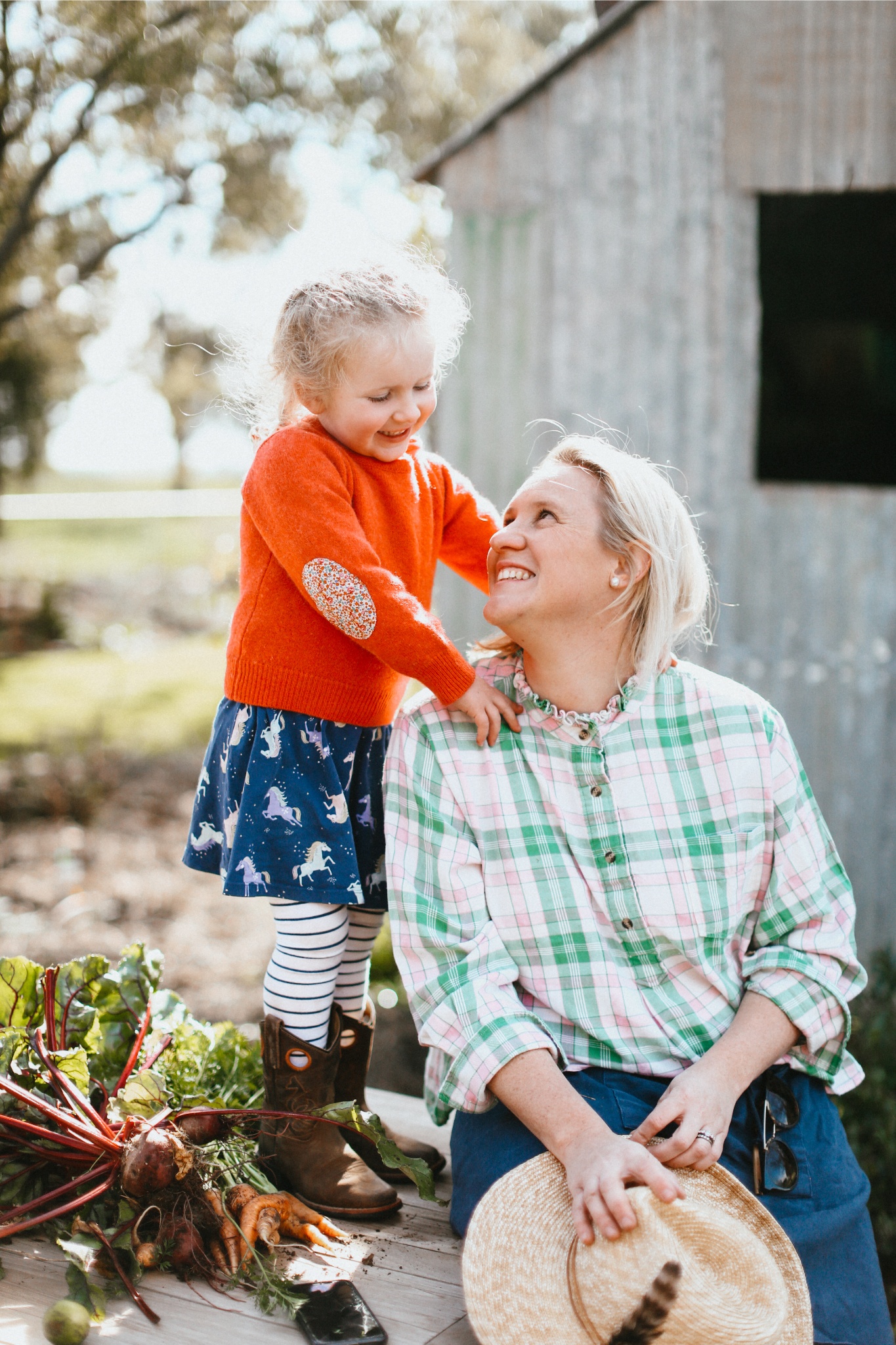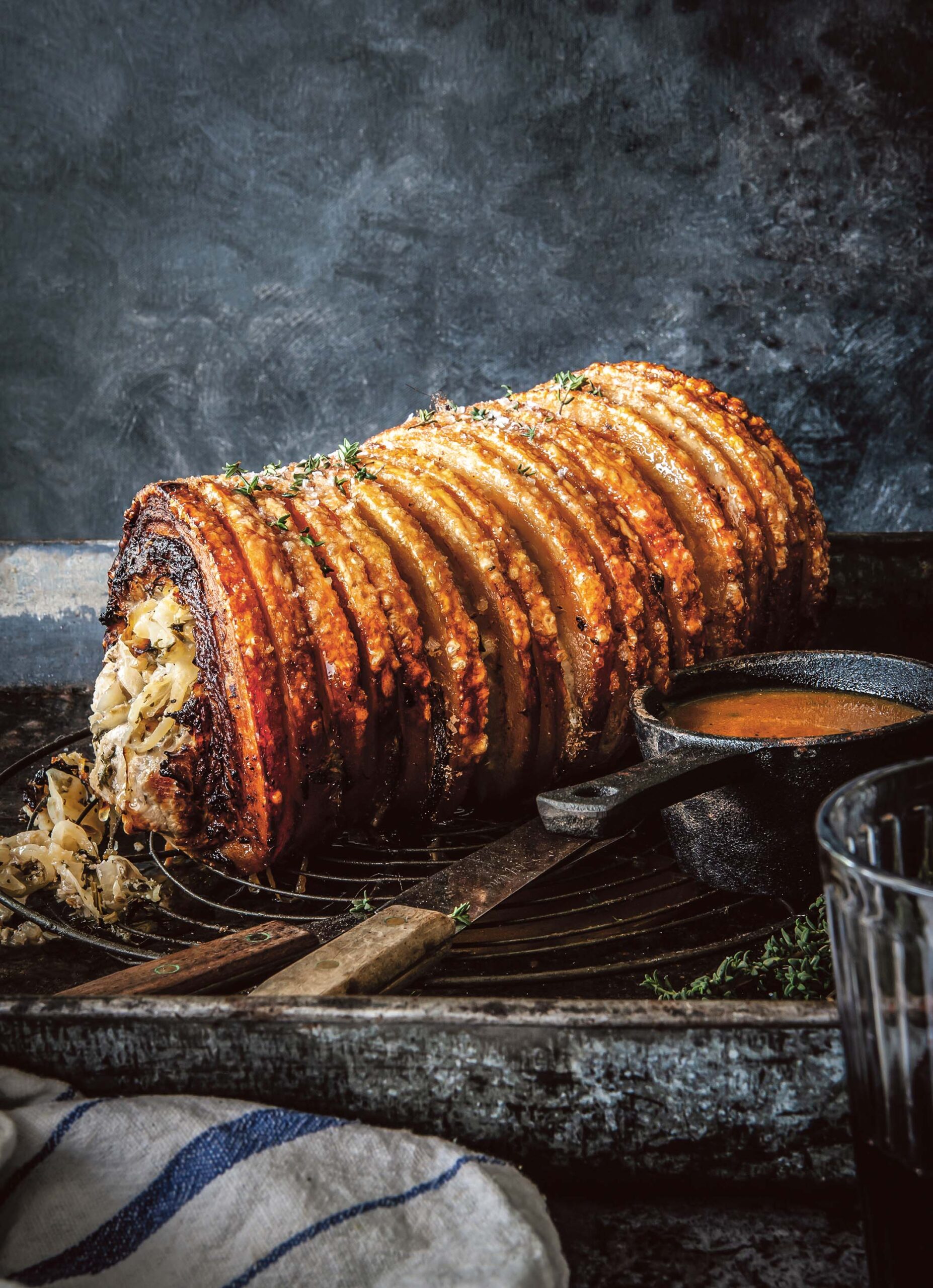PHOTOGRAPHY CLANCY PAINE
Claire’s daughter Sophie, four, loves to help.
Sign up to our mailing list for the best stories delivered to your inbox.
As she quickly discovered, nothing helps you put down roots in a new place like a shared love of gardening.
WORDS CLAIRE AUSTIN PHOTOGRAPHY CLANCY PAINE
I was lucky to grow up in a strong community at Gulargambone, where the entire population of this town in NSW’s Central West would come together to rally against the bank closing or volunteer at the local community-run café. Shopping locally wasn’t just nice, it was essential. When I lived and worked in Sydney, it was this sense of community that I missed.
When I finally returned west and made the move to Trangie in 2014, to be with my soon-to-be-husband on his family property, I wondered how I would fit in. While I was lucky to keep my full-time job in Sydney and work remotely, it wasn’t until I started my garden that I really started to feel I belonged here.
I now realise the potential of a garden to connect people. A gardener’s pride and generosity is extended through the garden: since starting a garden from scratch six years ago, I have been given countless favourite cuttings to grow and care for. The plumbago that my friend Rhonda left at the mailbox has started to form a hedge and I often think about the adventure I made to pick it up — timed with a morning sleep for a baby in the pram, the toddler using up some energy riding her bike alongside me, the dogs running ahead for a swim in the dam. A small package to pick up and to plant later that afternoon.
During the drought, I struggled with ways to keep the plants alive in the garden, so I started seeking advice and wisdom from local women whose gardens had survived many dry spells.
I learned to let the lawn go first and concentrate on keeping the garden beds alive; to water at dawn and dusk and to focus on the root zone. I loved the opportunity to walk around their gardens and see how they were keeping their own little (or big) oasis alive.
Then there is the excitement when the cuttings actually start to grow! Knowing they are from a local garden also increases their chance of survival.
Local nurseries also play a big part in establishing a garden. The people who work there are an amazing source of knowledge and advice. These garden gurus know what works for the area (and, more importantly, what doesn’t), and they remove some of the ‘trial and error’ that people seem to talk about when gardening.
Claire Austin chats to Graziher’s Life on the Land podcast about spring time in the garden. Article continues below.


“While I was lucky to keep my full-time job in Sydney and work remotely, it wasn’t until I started my garden that I really started to feel I belonged here.”
1. Keep an eye on the weather and protect frost-tender plants. I use a spray product called Envy.
2. Prepare garden beds well for spring planting. I mix decomposed sheep manure with soil and let it settle before planting.
3. Plant bare-root roses and trees. They are in their dormant state and are a cost-effective alternative to purchasing in spring.
4. Prune roses in July. I remove a good third of the plant and cut into a ‘U’ shape by removing growth in the centre of the plant.
5. Spray roses after pruning with lime sulphur while plants are dormant. This helps protect them from disease.
6. Take cuttings or divide plants and replant in the garden or in pots.
7. Plant winter vegetables including carrots, beetroot, cauliflower, broccoli, Brussels sprouts and baby spinach. Make sure to succession plant to ensure continued supply.
Claire Austin started the Gin Gin Garden Club in 2019 — a garden community based near Trangie, NSW.
Subscribe to Graziher and never miss an issue of your favourite magazine! Already a subscriber? You can gift a subscription to someone special in your life.
To hear more extraordinary stories about women living in rural and regional Australia, listen to our podcast Life on the Land on Apple Podcasts, Spotify and all major podcast platforms.

Irish butcher-and-chef duo Rick Higgins and Gaz Smith share recipes for porchetta with a winning stuffing, an indulgent mash and lamb shoulder with mother sauce.

Photographers share highlights of life on the land, from high-stakes competitions to moments of quiet contemplation.